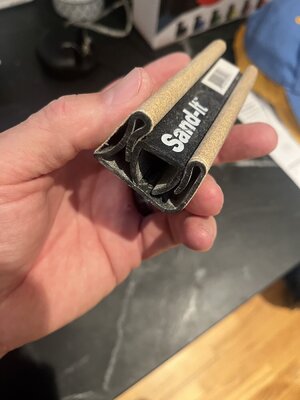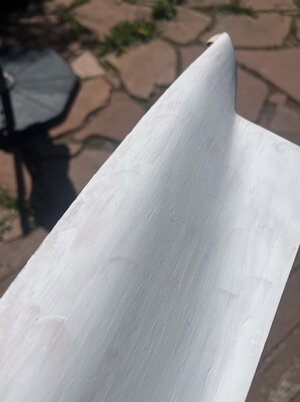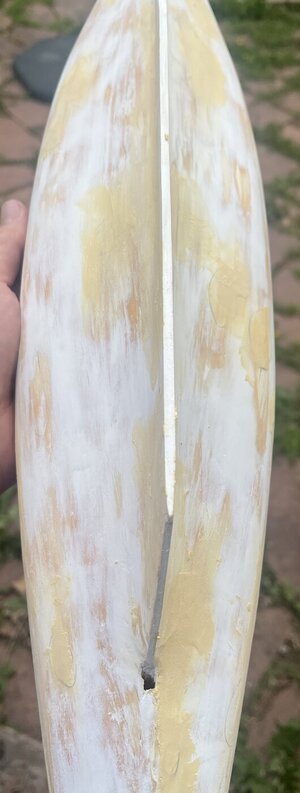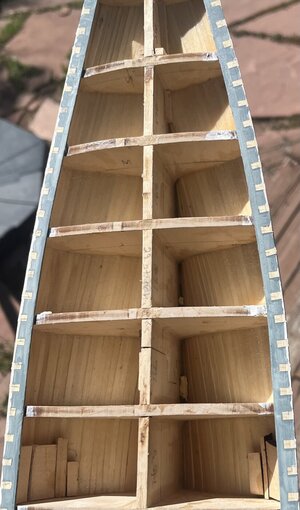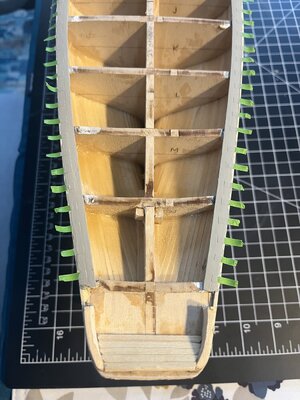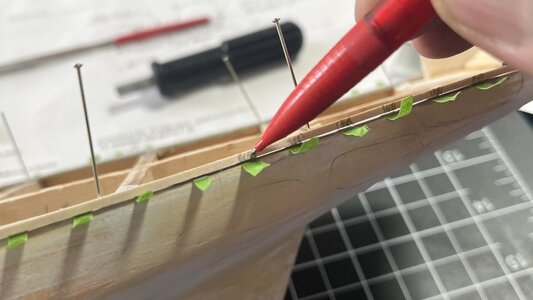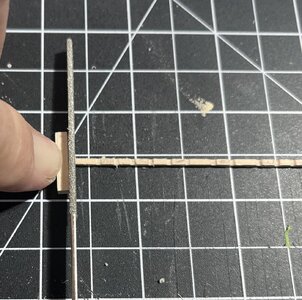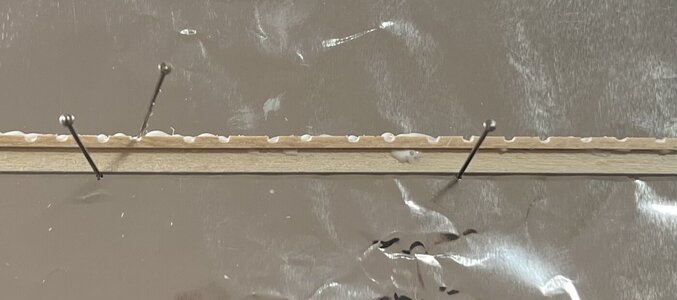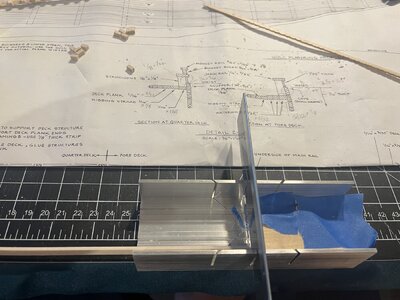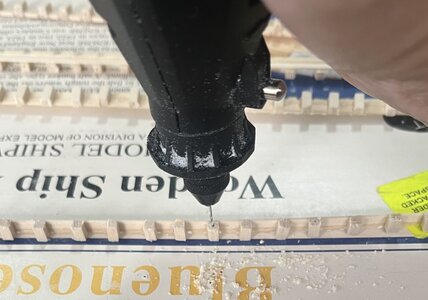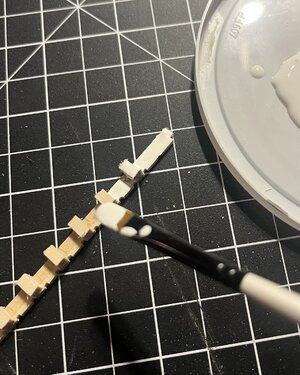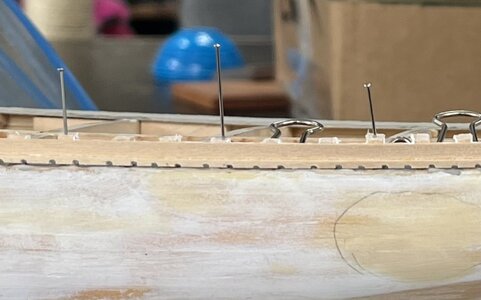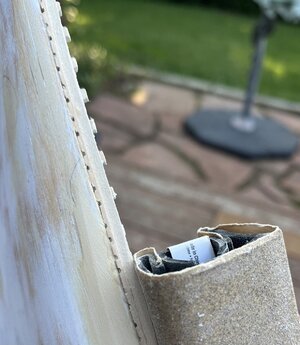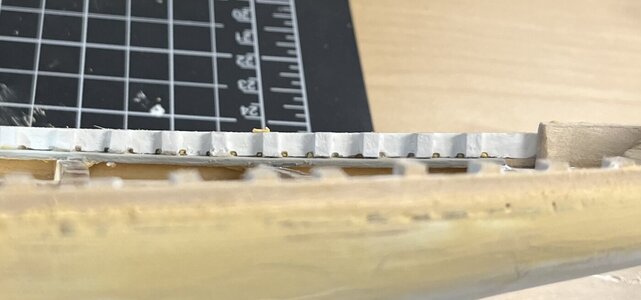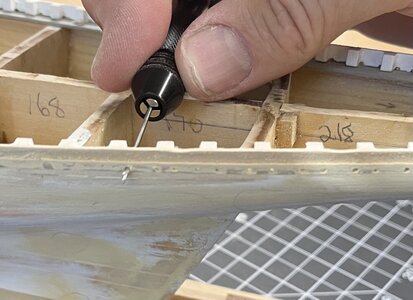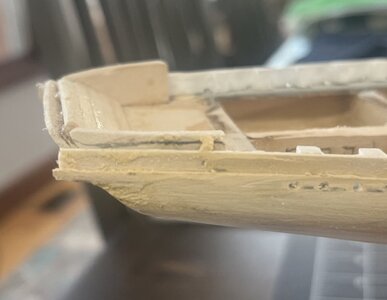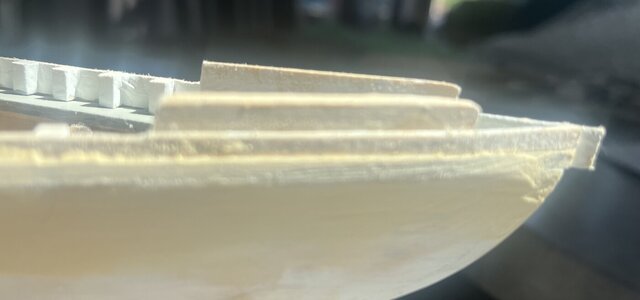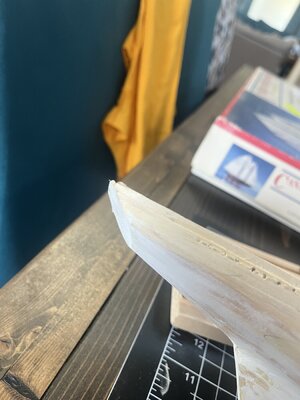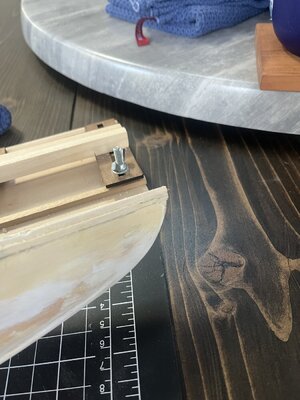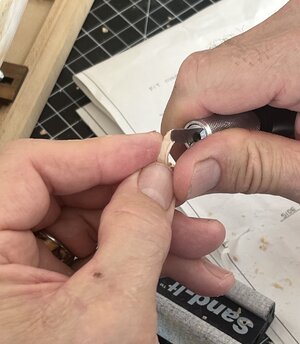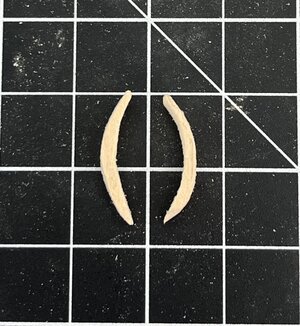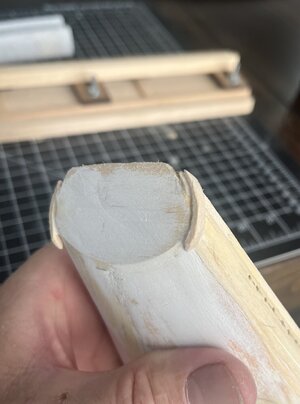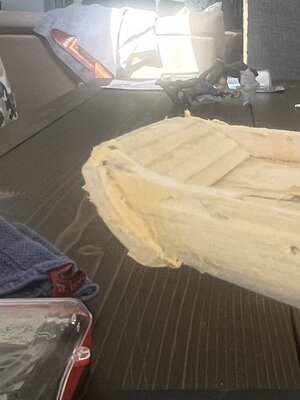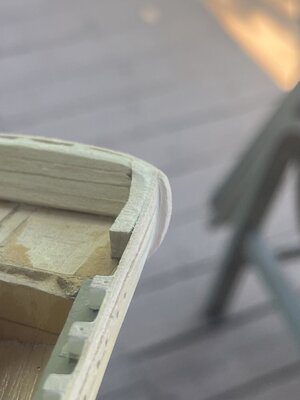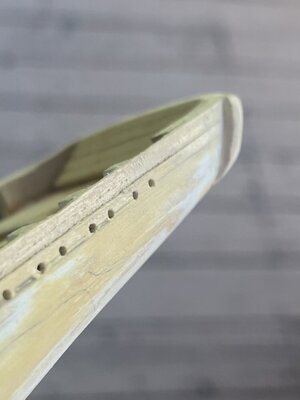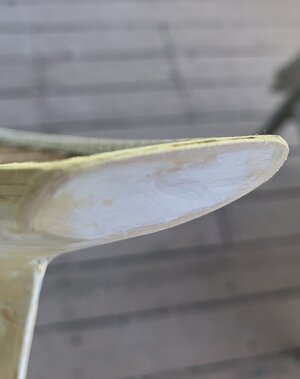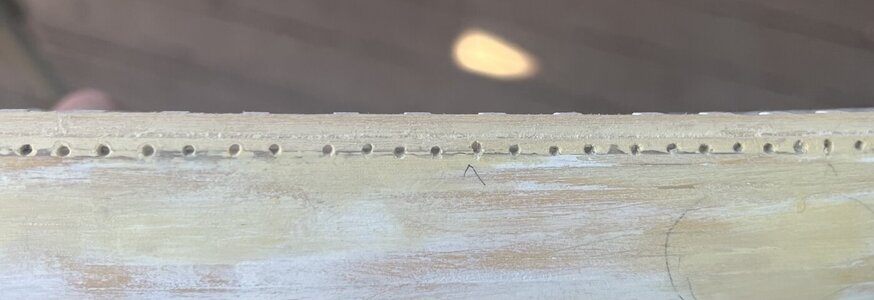6/9 to 6/16
Did one more through sanding, even (cover your ears) using my handheld orbital sander and finished up with my sanding block.
Quick plug for this sanding block… first off I don’t care for the specific grain sanding blocks that seem to be the norm these days. I’ve never used one, but it’s the old school in me that makes me not like them. I found this on Amazon and really like is. “Sand-It” used a 1/4 sheet of sand paper. It has all the typical sanding surfaces and holds the paper tight. Definitely with the $5. I like it so much and it’s fairly inexpensive, so I bought a second one for my Mexican toolbox.
View attachment 379798
After this sanding, I primered the hull and marked it one last time places that needed filler.
View attachment 379799
On a recommendation from
@Peter Gutterman I started using Elmer’s Wood Filler (white tub, orange lid). This filler straight out of the tub is very smooth, but since it is water soluble, I can wet my finger and not just apply it, I can work it into the areas that need it and smooth it out. If I had tried the wet finger technique earlier, I probably wouldn’t have needed so may rounds of adding filler and sanding.
View attachment 379800
I didn’t really like the shade of grey I used on the waterways plus once I took the tape off where the stanchions will be installed, the size irregularities of the tape became apparent so I replaced them and repainted with a lighter shade of grey.
View attachment 379802
I’m happy with the new tape and shade of grey.
View attachment 379803
I really like the way
@Jeff T painted his Bluenose hull so I ordered the same red he used (Model Expo MS 4814 - Hull Bottom Copper Red), so I ordered a bottle. While I wait for the paint for to arrive, I’m going to install the stanchions which means it’s scupper-time.
Like many others, I cut off the stanchions that were attached to the bulkheads, so I put pins in the waterways to help me align where the stanchions will be attached to the rail. I don’t have a pin pusher so I manufactured one using an old cheap screwdriver I had laying around. I took a hacksaw to the shaft, then drilled a hole into the shaft.
Due to the small size of the boards, I decided to omit the coves.
In researching how to do the stanchions and scuppers I couldn’t find a lot of detailed info (yes, lots of helpful pics), but not the details I like, so here’s what I did:
- Dry fitted the board that will have scuppers. For the quarter deck this is a 1/16” x 1/16” (same size of board I used as the top plank of the hull on the quarter deck) while on the fore deck is 1/8” x 1/16” (same size of board as I used to plank the hull). View attachment 379804
- Marked the board where each stanchion will be; this is where I taped the waterways.
- I knew the scuppers were small, but it wasn’t until I started planning them out that I realized just how small they actually are. They are supposed to be 1/64” x 3/64” and for the quarter deck, they are on a 1/16” x 1/16” board. I used a small file that is about 1/16” thick, so I ran the file across the board until I was about half way thru the quarter deck board and about a 1/4 way thru the fore deck board. View attachment 379807View attachment 379805
- The boards with the scuppers are thicker (1/16”) than the boards that are glued to them (1/32”), so I used a number of pins on a foil covered board to hold the scupper board and the rail board (1/8”) together while the glue dried. The foil was to make sure the 2 boards didn’t get glued to anything else. View attachment 379806
- Cut 1/8” x 1/8” stock into pieces that are a little bit taller then the 2 boards (scupper board and rail board). View attachment 379808
- Glued stanchions to the boards. View attachment 379809
- Drilled 1/32” (?) hole in every 3rd stanchion or so.View attachment 379810
- Clean excess glue off/out of scuppers.
- Paint the inside of the completed rails white.View attachment 379811
- Remove tape from the waterways.
- Glue the painted rails to the waterways.
- Insert pins in drilled stanchions (to assist in keeping them in place while glue dries).
- Sand the outside of the rail boards to align them with the edge of the planks of the hull.
- Sand the excess tops of the stanchions off.
I only made it through #10 before having to pack it in as I’m off to visit family in North Carolina. Wish I could have finished the rails or be able to take it with me, but that is not possible.
Work time: 8.5 hours
Total work time: 91.5 hours

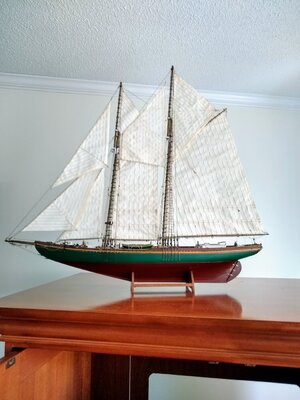
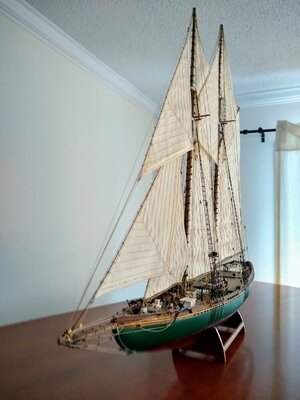
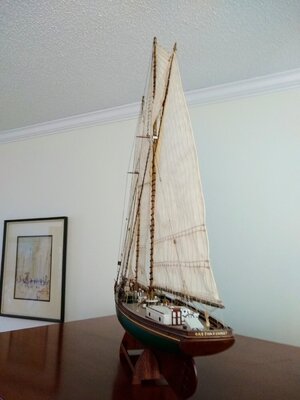
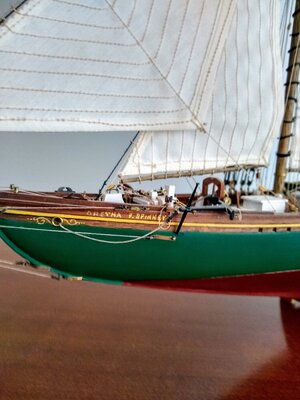
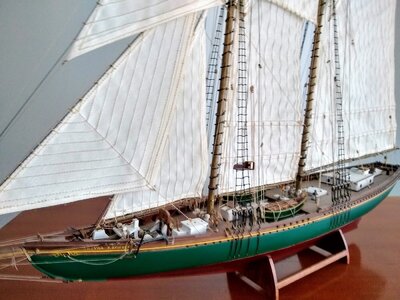
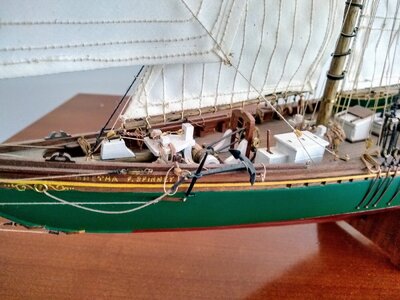
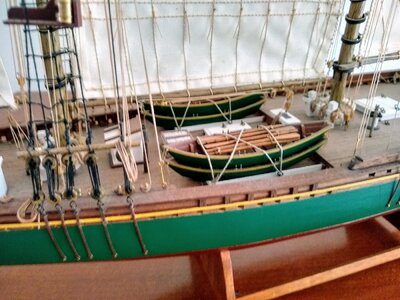
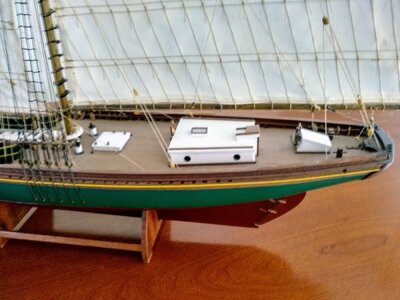











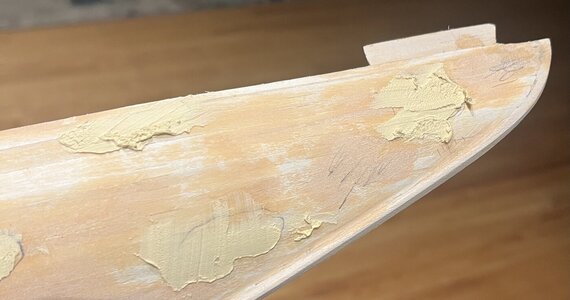
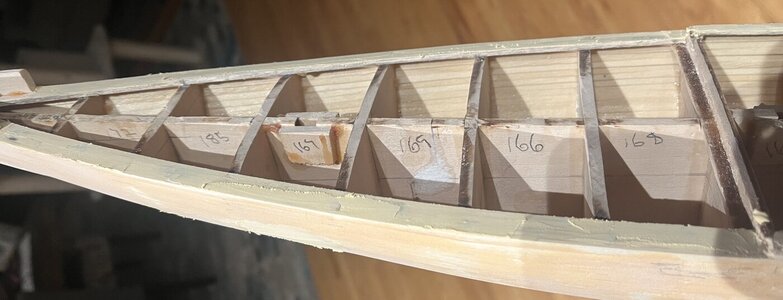
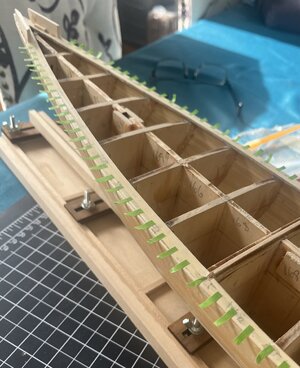

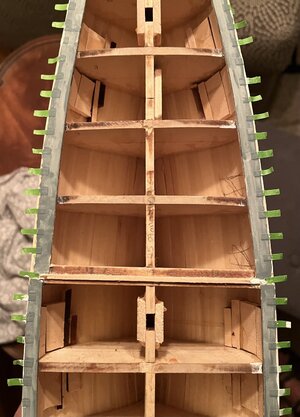
 .
. I saw the made for TV version. I like the '37 movie better. Never saw the '77 version . No idea which is closer to the book. I confess I never read it.
I saw the made for TV version. I like the '37 movie better. Never saw the '77 version . No idea which is closer to the book. I confess I never read it.

